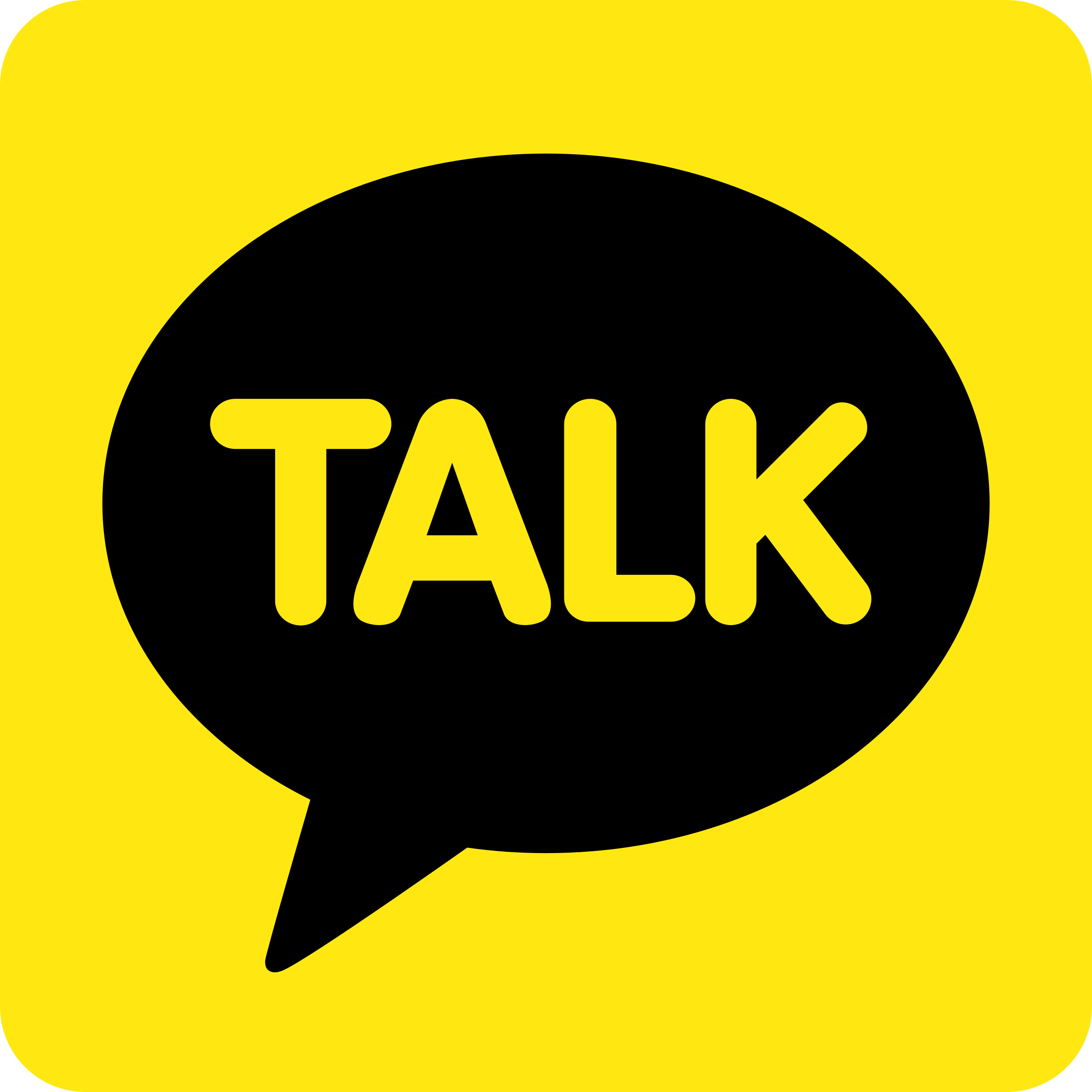Scalp Massage While Shampooing – The Secret to Relieving Headaches and Insomnia
 Posted Wednesday, 24 Month 09 2025 21:00
Posted Wednesday, 24 Month 09 2025 21:00 Post content[Hide][Show]
- Scalp Massage While Shampooing – The Secret to Relieving Headaches and Insomnia
- 1. Overview of Scalp Massage While Shampooing
- 2. Outstanding Benefits for Health and Sleep
- 2.1. Relieving Headaches and Neck–Shoulder Tension
- 2.2. Improving Sleep Quality and Reducing Insomnia
- 2.3. Stimulating Hair Growth, Reducing Hair Loss and Dandruff
- 2.4. Boosting Mood and Enhancing Focus
- 3. Standard Scalp Massage Procedure at tigon massa Massage & Spa
- 3.1. Scalp Diagnosis and Product Selection
- 3.2. Warming the Scalp
- 3.3. Pressure–Circular–Stroking Techniques
- 3.4. Neck–Shoulder Care
- 3.5. Rinse–Nourish–Moisturize and Consultation
- 4. Routine: Frequency and Golden Timing
- 5. Who Should and Should Not Try Scalp Massage While Shampooing?
- 6. Tips for Maximum Effectiveness
- 6.1. At-Home Scalp Massage – Convenient and Cost-Effective
- 6.2. Spa Scalp Massage – Optimal Results at tigon massa Massage & Spa
- 7. Frequently Asked Questions (FAQ)
- 7.1. Does Scalp Massage While Shampooing Really Improve Sleep?
- 7.2. Is It Suitable for Dandruff Scalp?
- 7.3. Safe Frequency?
- 7.4. Can Pregnant Women Try It?
- 7.5. Wet or Dry Massage – Which is Better?
- 8. Conclusion
Scalp Massage While Shampooing – The Secret to Relieving Headaches and Insomnia
1. Overview of Scalp Massage While Shampooing
Scalp massage during shampooing – the secret to relieving headaches and insomnia – is becoming a simple yet highly effective health care habit. The kneading, pressing, and stroking movements on the scalp help increase blood flow to hair follicles and small muscles around the skull, releasing tension in the neck–shoulder–nape area, thereby reducing headaches and relaxing the nervous system. When combined with shampooing, the warmth of the water and the smoothness of the foam allow gentle, deep movements without pulling or tangling the hair.
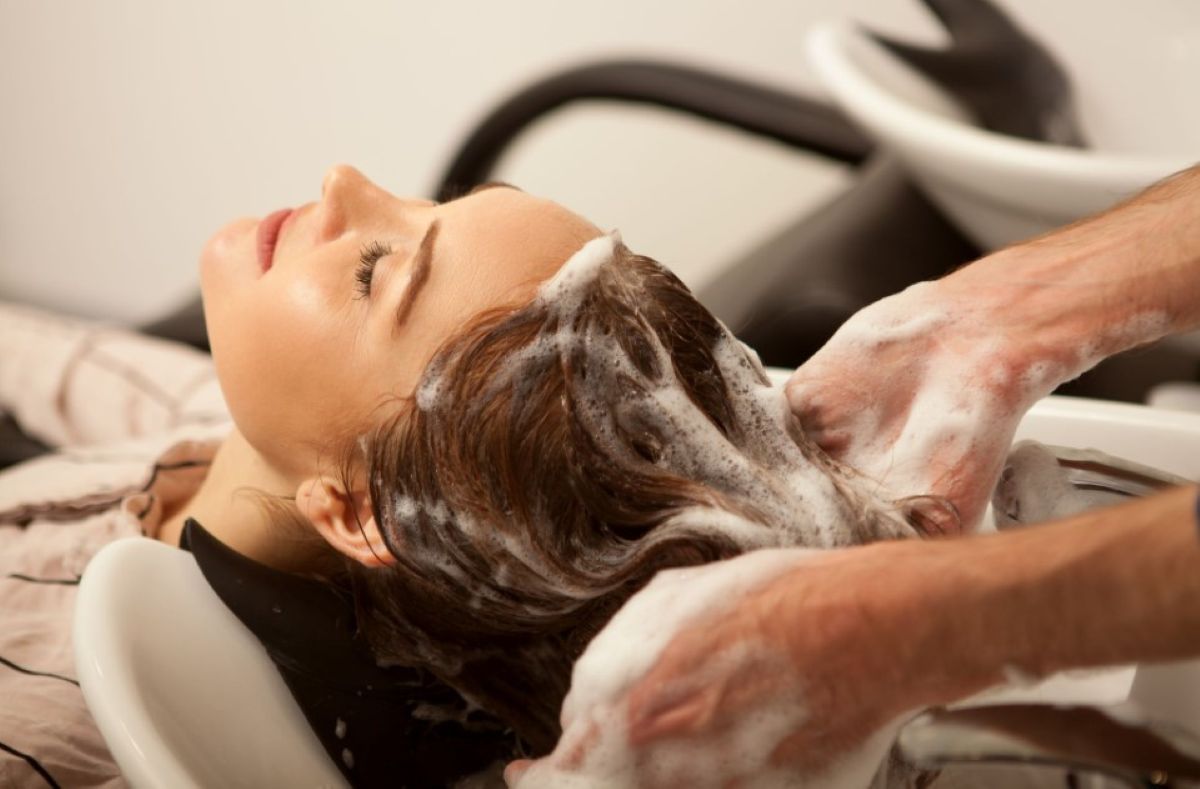
2. Outstanding Benefits for Health and Sleep
2.1. Relieving Headaches and Neck–Shoulder Tension
Tension headaches often stem from tightened muscles around the scalp and neck. Proper massage techniques “untie the knots” by loosening fascia bands, activating circulation, and sending mild sedative signals to the nervous system. Many clients feel lighter, less eye strain, and relaxed shoulders after just 15–20 minutes.
2.2. Improving Sleep Quality and Reducing Insomnia
Relaxation before bed is essential. A scalp massage during evening shampooing creates a calming rhythm, reduces cortisol, and helps the body transition into rest mode. You’ll fall asleep more easily, wake up less at night, and feel more refreshed in the morning.
2.3. Stimulating Hair Growth, Reducing Hair Loss and Dandruff
Good circulation ensures follicles receive enough nutrients and oxygen. Combined with mild shampoo and proper rinsing, the scalp becomes less oily, less flaky, and the hair stronger. For stress-related hair loss, regular relaxation also helps reduce shedding over time.
2.4. Boosting Mood and Enhancing Focus
Rhythmic massage combined with soothing aromas helps the brain “switch channels” from worries. Many people report improved productivity and a more positive mindset after care.
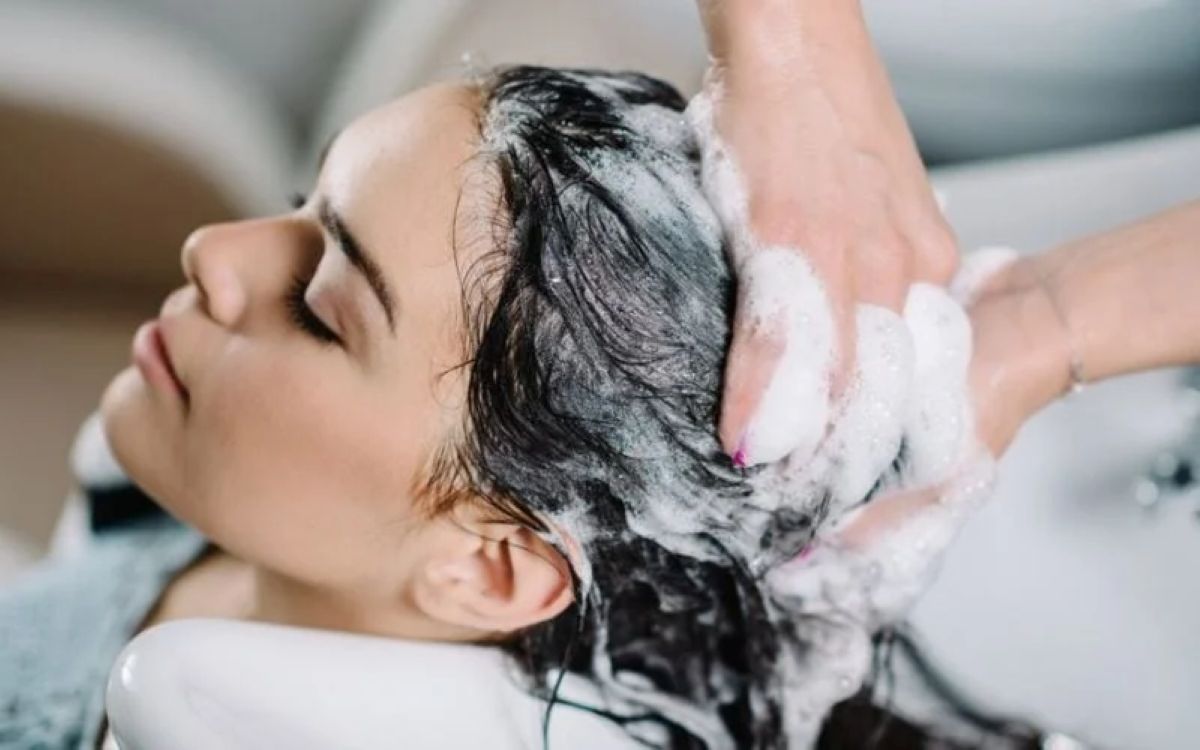
3. Standard Scalp Massage Procedure at tigon massa Massage & Spa
3.1. Scalp Diagnosis and Product Selection
Technicians observe scalp conditions (oiliness, dryness, dandruff, irritation) and ask about sleep and headaches. From there, they choose balanced pH shampoo and essential oils (lavender for relaxation, peppermint for cooling, tea tree for dandruff control).
3.2. Warming the Scalp
Warm water (36–38°C) gently opens pores, preparing for massage. A warm towel around the neck relaxes muscles before the session.
3.3. Pressure–Circular–Stroking Techniques
- Circular kneading at the temples, moderate rhythm.
- Stroking along the hairline up to the crown to activate circulation.
- Gentle pressing on Baihui point (top of the head) in sync with the client’s breathing, bringing a sense of “lightness.”
- Stretching the scalp with lifting–releasing motions, without pulling hair.
3.4. Neck–Shoulder Care
Since headaches often come with neck–shoulder tension, kneading and stroking this area doubles relaxation, reducing stiffness from prolonged sitting.
3.5. Rinse–Nourish–Moisturize and Consultation
Foam rinsing, using appropriate conditioner or spray, and gentle drying. Technicians advise on self-massage (5–7 minutes at home) to maintain results.
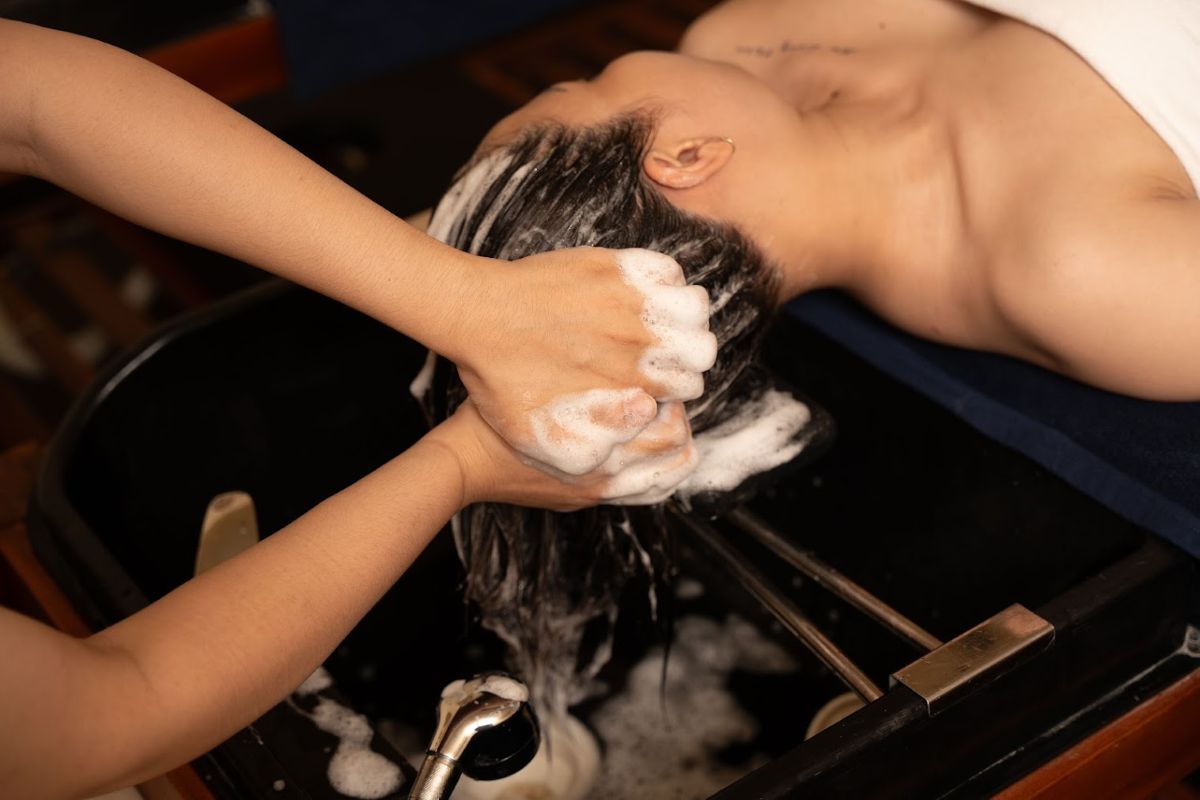
4. Routine: Frequency and Golden Timing
4.1. Is 2–3 Times/Week Suitable?
For most, yes. If the scalp is very oily or you sweat a lot, you may add one more session, but ensure thorough rinsing to avoid greasiness.
4.2. Evening Time for Deeper Sleep
Shampoo–massage 1–2 hours before bedtime. At this point, body temperature and circadian rhythm align with relaxation, helping you fall asleep more easily.
5. Who Should and Should Not Try Scalp Massage While Shampooing?
5.1. Recommended for Those Who:
- Suffer headaches from neck–shoulder tension.
- Have trouble sleeping or wake frequently.
- Have oily scalp, mild dandruff, or stress-related hair loss.
- Work long hours on screens, easily straining eyes and forehead.
5.2. Caution/Not Recommended for Those With:
- Inflamed scalp, severe flaking, or open wounds.
- Recent head/neck surgery.
- Vascular or neurological conditions (consult a doctor).
- Allergies to essential oils/shampoo ingredients.
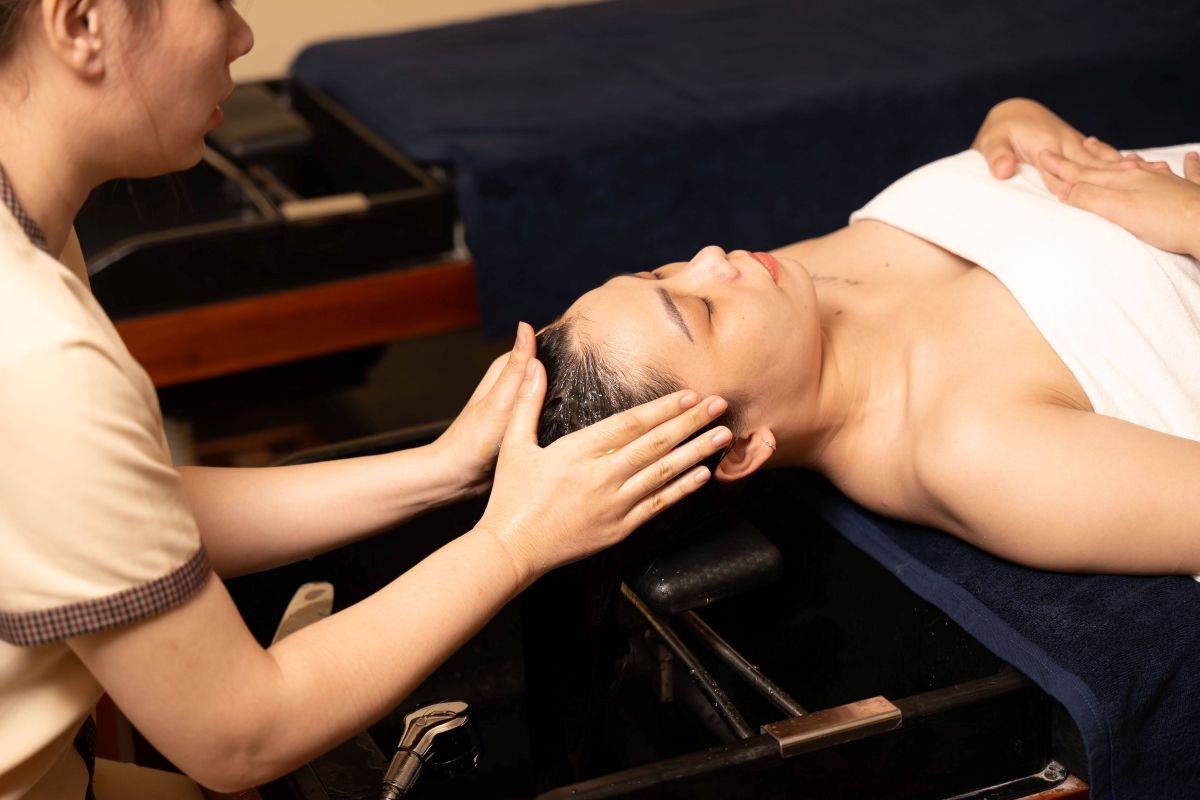
6. Tips for Maximum Effectiveness
6.1. At-Home Scalp Massage – Convenient and Cost-Effective
Benefits include:
- Gentle relaxation, stress relief.
- Improved circulation, nourishing healthy hair.
- Maintaining daily scalp–hair care habits.
- Easy, cost-saving, and anytime practice.
6.2. Spa Scalp Massage – Optimal Results at tigon massa Massage & Spa
While home massage is useful, for deeper, longer-lasting results, scalp massage at tigon massa Massage & Spa is superior:
- Professional diagnosis & consultation tailored to your scalp, hair, and lifestyle.
- Safe, carefully selected products: balanced pH shampoo, natural essential oils (lavender, peppermint, tea tree).
- Accurate, professional massage techniques: pressure–circular–stroking on acupoints, combined with neck–shoulder care.
- Relaxing spa environment: gentle lighting, soothing aromas, therapeutic music.
- Comprehensive long-term benefits: headache relief, improved sleep, healthier stronger hair, better mood.
7. Frequently Asked Questions (FAQ)
7.1. Does Scalp Massage While Shampooing Really Improve Sleep?
Yes. Nervous relaxation, neck–shoulder relief, and gentle aromas before bedtime promote faster, deeper sleep.
7.2. Is It Suitable for Dandruff Scalp?
Yes, with gentle technique and proper products. For severe dandruff or irritation, consult first.
7.3. Safe Frequency?
2–3 times/week. If scalp is healthy, you may add 5–7 minutes of dry (non-shampoo) massage on other days.
7.4. Can Pregnant Women Try It?
Consult a doctor first. Avoid strong oils in the first trimester. Use very gentle pressure, avoiding deep pressing.
7.5. Wet or Dry Massage – Which is Better?
During shampoo (wet, with foam) for smoother, deeper effect; quick 5-minute dry massage midday is also helpful.
8. Conclusion
If you are looking for a natural, soothing solution to headaches and insomnia, Scalp Massage While Shampooing – The Secret to Relieving Headaches and Insomnia is your simple yet effective “key.”
At tigon massa Massage & Spa, we design scientific procedures, use gentle products, and employ skilled technicians to deliver a safe, relaxing, and personalized experience.
Book your appointment today to enjoy deeper sleep and healthier, stronger hair!


















